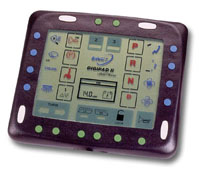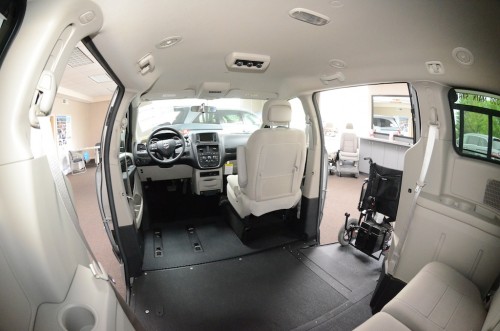
Through their Driving Assessment Program, Spaulding Outpatient Centers offer evaluations for people experiencing functional changes due to trauma, surgery, a neurologic incident, or the aging process. It is an essential part of the assessment to address any deficits that may influence your safety and independence behind the wheel and as a licensed driver.
Medical conditions that may affect driving skills include stroke, Parkinson’s disease, dementia, Alzheimer’s disease, acquired or traumatic brain injury, macular degeneration, glaucoma, neuropathy, cardiac disease, arthritis and cerebral palsy. These conditions may affect your vision, memory, attention, and ability to problem solve and react quickly.
If you are unsure if your condition affects your driving abilities, or if you need a doctor’s order to medically clear you to drive, you may benefit from a driving evaluation. If you are concerned about the driving abilities of a family member or friend, you may want to recommend that they participate in a driving assessment.
We will assess your vision, spatial awareness, ability to shift attention, problem solving, sequencing, and awareness of others on the road. We also will assess your own strengths and weaknesses, ability to read traffic signs, ability to identify and safely respond to hazards, gas/brake/steering reaction time, and other physical and cognitive abilities. This evaluation may also examine the need for adaptive equipment to make driving easier for you.
Our approach is to assess all of the abilities of a person who is driving – physical, cognitive, visual, perceptual, as well as driving behaviors. We start with a clinical assessment that takes one to two hours. Following this, a person may be recommended for an in-vehicle assessment coordinated between the patient, their family/support, the occupational therapist, and one of our partner driving schools.
Following both assessments, recommendations are made to resume driving safely, pursue retraining on the road, pursue modifications/training for vehicles, pursue additional therapy to address areas of concerns, or refrain from driving. Alternative transportation options may be discussed as well. Reports are sent to the referring physician and may be sent to the Registry of Motor Vehicles.
A Driving Assessment is conducted by an occupational therapist at one of our six centers specializing in this evaluation. The occupational therapist has the opportunity to participate in training in the most advanced assessment tools and methods to ensure competent decision making both clinically and on the road.
The Spaulding occupational therapists who perform driving assessments have a unique benefit of being able to consult with each other as part of a team to allow the best quality of service for their patients. Our Spaulding occupational therapists are skilled in the assessment of vision, perception, cognition and mobility, as well as the complex interaction of all of these components during driving.
The Spaulding Rehabilitation Network is dedicated to researching innovative treatments for our patients who may need assistance with driving evaluations.
Program
In-Vehicle Assessment
Description
An on-the-road evaluation may be performed to determine your ability to drive safely in a closely supervised environment. This involves an in-traffic evaluation, helping to correlate the findings from the clinical tests with your on-the-road performance. This evaluation is performed in a vehicle that has an instructor’s brake, an occupational therapy, and a certified driving instructor. Results of both the clinical and road evaluations are sent to the referring physician along with specific recommendations, such as medical follow-up, outpatient therapy, driving lessons, or adaptations to your car to allow for safe driving. The evaluation is given on a self-pay basis and takes between two and three hours to complete.
Clinical Assessment
The clinical assessment utilizes evidence-based testing correlated to the skills required for driving. This includes vision, cognitive, and physical/reaction time testing.
Driving Assessments are offered at these Spaulding Outpatient Centers:
Outpatient
Spaulding Outpatient Center Sandwich
Spaulding Outpatient Center Wellesley
Spaulding Outpatient Center Braintree
Spaulding Outpatient Center Boston
Inpatient
Spaulding Hospital North Shore
Spaulding Rehabilitation Hospital Boston
Spaulding Rehabilitation Hospital Cape Cod
Assistive Technology Services

In the past decade, advances in computer technology and materials science have revolutionized the field of assistive and adaptive technologies. Assistive technologies can open new worlds for individuals with physical, communication, and cognitive limitations.
Technologies can help someone who is learning to live with a new disability compensate for his or her limitations. A new technology may also help someone with a chronic or progressive disabling condition maintain or improve his or her independence.
At Spaulding Rehabilitation Network’s (SRN) Assistive Technology Center in Boston, dedicated and experienced clinicians in physical therapy, occupational therapy, and speech-language pathology provide assessments and training with different types of assistive technologies.
Alternative Computer Access – People who are unable to use a standard keyboard or mouse due to physical, visual, or cognitive limitations may be able to operate a computer with alternative computer access technologies such as voice recognition, adaptive keyboards, a specialized mouse, or assistive software.
Assisted Memory and Information Processing – Electronic memory aids can benefit outpatients following brain injury, as well as individuals with dementia or other forms of memory loss. Small portable computing devices such as PDAs and smart phones can successfully aid individuals with memory loss.
Communication – Spaulding’s Augmentative and Alternative Communication (AAC) program provides comprehensive evaluations and interventional strategies for those needing alternative or augmentative means of communication through use of a variety of different communication devices. Augmentative and Alternative Communication is a set of strategies and methods to assist people who are unable to meet their communication needs through speech or writing. AAC strategies may include low-tech options (such as letter boards or communication books) or high technology devices that produce speech. These devices can be customized to meet the individual’s communication needs at home, at school, at work, and in the community. The goal is to provide communication skills that extend beyond simply conveying of basic wants and needs, and provides the means to allow each individual to be heard, and to express emotions.
Electronic Aids to Daily Living – People who have difficulty using their arms and hands to control objects during everyday activities can gain control through remote switches to operate household appliances and devices such as TV, stereo, lights, call bell devices, door openers, and thermostats.
Ergonomics – Repetitive Strain Injury can make it difficult to use a standard computer set-up. Many people with wrist, shoulder, or neck pain may benefit from using ergonomic keyboards and mice, and from workstation modifications and body mechanics education.
Mobility, Seating, and Positioning – Wheelchair users may gain further independence through advanced wheelchair technologies. Some people may require modifications to a manual wheelchair; others may need a power wheelchair controlled by a joystick or a specialized switch, activated by sip and puff, or head movement.
Wheelchair users who have difficulty sitting upright, or who have postural abnormalities, may also benefit from customized seating and positioning systems. The systems use modified back supports, seating components, and tilt or recline features to meet an individual’s needs. The systems are designed so that users can achieve the best possible posture and can improve their performance of everyday activities.




 In the past decade, advances in computer technology and materials science have revolutionized the field of assistive and adaptive technologies. Assistive technologies can open new worlds for individuals with physical, communication, and cognitive limitations.
In the past decade, advances in computer technology and materials science have revolutionized the field of assistive and adaptive technologies. Assistive technologies can open new worlds for individuals with physical, communication, and cognitive limitations.